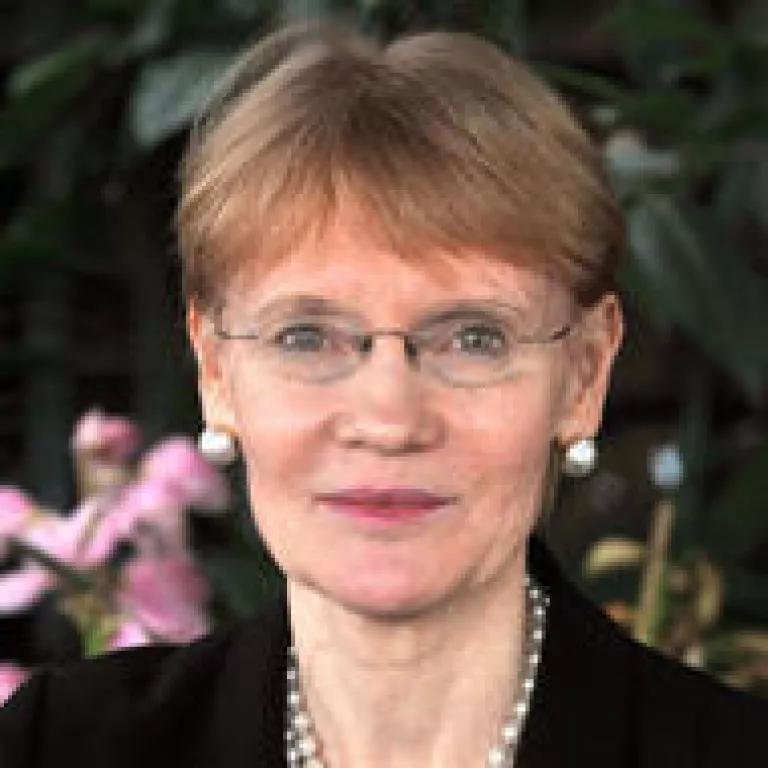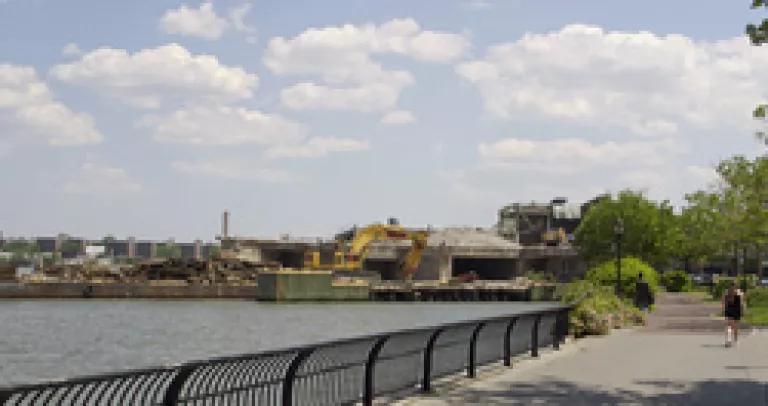Environment and Sustainability in the Administration of NYC Mayor Bill DeBlasio (Part I)

As New York City Mayor Bill DeBlasio hits his 100th day in office, his administration’s approach to environmental issues and sustainability is beginning to take shape.
To be sure, the first months of the Mayor’s term have been dominated by issues like snowstorm clean-up, universal pre-kindergarten, and charter schools. And it is too soon to tell how the DeBlasio Administration will tackle numerous environmental and quality-of-life issues that are certain to arise over the next four years.
Nevertheless, at this early point in his first year in office, we can make a preliminary assessment as to where the Administration is heading. And, from these quarters, it looks like the Mayor’s environmental compass is pointing in the right direction. (Of course, the hard part is just beginning.)
In this blog, we’ll re-cap the Mayor’s most important environmental appointments, summarize his public rhetoric on sustainability, and discuss how he has begun to address two environmental controversies that have already surfaced.
Next week, in Part II of this blog, we’ll highlight some of the most important environmental challenges the Mayor is likely to face as his term unfolds.
The Appointments
One reason for our cautious optimism is the quality of the personnel the Mayor has selected for environmental leadership positions within his administration. They may not be card-carrying members of NRDC. But the people the Mayor has chosen to run his four biggest environmentally-focused departments all have deep experience in government and management and demonstrated commitments to environmental sustainability and public service.
-- To head the Department of Transportation, Mayor DeBlasio named Polly Trottenberg as Commissioner. Polly was plucked from a senior position in the U.S. Department of Transportation. Her prior post was Executive Director of Building America’s Future, a non-profit that supports increased investment in transportation infrastructure. And before that, she worked for U.S. Senators Charles Schumer, Daniel Patrick Moynihan and Barbara Boxer.
Commissioner Trottenberg has indicated that her priorities will include implementing the Mayor’s Vision Zero traffic and pedestrian safety initiative. And she has pledged to continue to expand opportunities for bike lanes and expedited bus service throughout the city.
-- To run the Department of Environmental Protection, the Mayor appointed Emily Lloyd as Commissioner. Emily most recently headed the non-profit Prospect Park Conservancy and had previously been Environmental Protection Commissioner under Mayor Bloomberg (and NYC Sanitation Commissioner in the Dinkins Administration).
In her first go-round at DEP, Commissioner Lloyd was devoted to protecting New York City’s irreplaceable, unfiltered drinking water supply via pollution prevention and watershed protection. And she certainly knows the ins and outs of running this challenging agency.
-- To steer the Department of Sanitation, the Mayor selected Kathryn Garcia as Commissioner. Kathryn most recently served as the Chief Operating Officer at the City’s Department of Environmental Protection, where she oversaw DEP’s day-to-day operations. Before that, she held a senior position at the non-profit organization Appleseed, which advocates for equity and fair allocation of resources throughout all neighborhoods in the New York region.
Throughout her tenure at DEP, Kathryn demonstrated a commitment to sustainability. And on the day of her appointment as Sanitation Commissioner, she pledged to bring innovation to DSNY’s sustainability push and to increase recycling, composting and reuse programs.
-- To oversee the Department of Parks and Recreation, Mayor DeBlasio tapped Mitchell Silver as Commissioner. Mitchell was most recently Planning Director for the city of Raleigh, N.C., where he authored the city’s comprehensive development plan, which focused on expanding parks, greenways and open spaces along with affordable housing. Before that he was Deputy Director of Planning in Washington D.C.
Commissioner Silver, who once worked with the New York City Planning Department and who also directed the Manhattan Borough President’s Northern Manhattan office, played a key role in developing the beautiful Harlem Piers Park along the Hudson River; he has an international reputation as an urban innovator and, in his first day on the job, pledged to expand public access to parkland in every neighborhood of the city.



Quality Appointments: Transportation Commissioner Polly Trottenberg, Environmental Commissioner Emily Lloyd, Sanitation Commissioner Kathryn Garcia, and Parks Commissioner Mitchell Silver
Three months after taking office, the Mayor has yet to fill several key environmental positions, including the Chair of the Landmarks Preservation Commission and the head of the Mayor’s Office of Long-Term Planning and Sustainability. The DeBlasio Administration has indicated that when it comes to appointments, it values quality over speed.
Recent Pronouncements
Actions, of course, speak louder than words. Still, the Mayor’s statements about the environment over the past three months have fueled our positive expectations. For example:
On January 1st, at his City Hall swearing-in ceremony, Mayor DeBlasio praised former Mayor Michael Bloomberg’s work in the sustainability area:
“Your passion on issues such as environmental protection and public health has built a noble legacy” DeBlasio said, as Mayor Bloomberg looked on.
The following month, during a February 18th press conference at which he named several new commissioners, including Emily Lloyd, Mayor DeBlasio stated:
“We have the potential to be the most sustainable big city in the world. And DEP is crucial to that work and crucial to creating a greener and more resilient city.”
On March 15th, in the very first paragraph of the official press release announcing the appointment of Kathryn Garcia to lead the Sanitation Department, Mayor DeBlasio defined the central responsibilities of that department as “keep[ing] the streets clean and safe, and build[ing] a more sustainable city.”
Moreover, these statements are consistent with Mayor DeBlasio’s campaign document, “A Framework for a Sustainable City.” In setting forth a surprisingly in-depth set of environmental proposals, the document stated:
“New York City has been a leader in green initiatives to save energy, protect the environment, and build green jobs for our economy. Bill de Blasio intends to build on that history and expand sustainability initiatives throughout the five boroughs.”
In sum, the early rhetoric has been positive. In the months to come, we’ll get a better indication of whether the administration’s actions match up.


The DeBlasio Administration has had to navigate through two early environmental controversies – the City’s long-standing plans for a state-of-the-art waste transfer facility on Manhattan’s East Side and the proposal to ban on the Central Park carriage horse trade.
The East 91st Street Waste Transfer Station and the Central Park Carriage Horses
Finally, the Mayor’s response to the first two environmental controversies of his young administration has also given us some encouragement.
The first dispute involves the City’s long-standing plan to build a state-of-the-art waste transfer station on Manhattan’s Upper East Side. This facility was included in the 2006 citywide Solid Waste Management Plan, which was designed to reduce citywide air pollution, expand barge and rail transport of city refuse, and insure a greater measure of borough equity in city waste-handling operations.
Residents living near the station’s East 91st street project site unsuccessfully challenged the city’s plan in court and have continued a sophisticated and well-funded campaign to block the new facility from opening.
Mayor DeBlasio, after initial hesitation during the campaign, has apparently decided to keep things moving forward. As his spokeswoman recently told the Daily News, the Mayor is open to “discuss[ing] ways to minimize the impacts” of the facility but he remains “committed to implementing the five borough plan.”
In other words, Mayor DeBlasio -- correctly in our view -- has demonstrated sensitivity to the legitimate concerns of the East 91st street neighborhood residents and a willingness to further enhance the project, while at the same time sticking with the overall 2006 citywide waste plan and with construction of this needed facility.
The second environmental controversy the Mayor has faced centers on health and safety of the Central Park carriage horses.
The issue arose during the mayoral campaign, when candidate DeBlasio pledged to supporters that he would seek a ban on the carriage horse trade, referencing the inhumane conditions to which the horses are subjected (e.g. motor vehicle traffic and pollution, weather extremes and a harsh working environment, etc.).
But right out of the starting gate, that proposal met controversy. Carriage horse drivers, unions, celebrities and some elected officials are publicly opposing the ban and continue to question its underlying assumptions.
Rather than press for an early City Council vote (in which the carriage horse ban might go down in defeat), Mayor DeBlasio has elected to slow the pace. That seems sensible.
Don’t be surprised if the Administration decides in coming months to prepare an environmental study of this proposal. Such an analysis could marshal the facts, which are now a matter of dispute. And it could build the case in support of a policy that seeks to protect the health and well-being of the carriage horses, is responsive to the employment concerns of carriage horse drivers and addresses the priorities of the animal rights community.
---
In short, the DeBlasio administration honeymoon period on environment and sustainability issues has gone pretty well, all things considered. Now comes the tough stuff.

